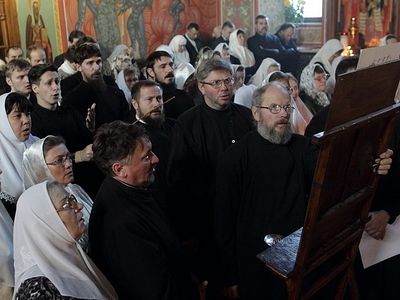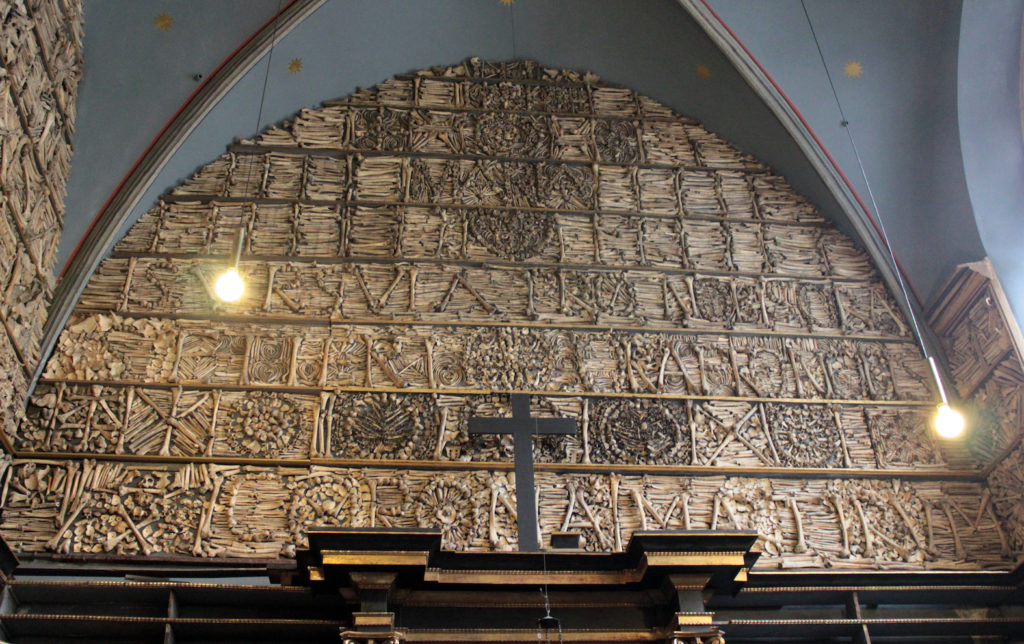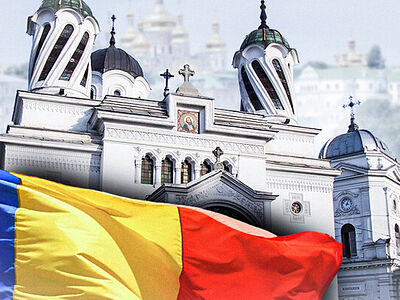For Natalie Ibarra, the theme of this year’s National Catholic Youth Conference (NCYC) — “El Camino / The Way” — is the best theme featured in her three years as communications manager for the National Federation for Catholic Youth Ministry.
“I think, every year, we always have a great theme, and I always say, ‘This is the best theme,’ and then, next year, it goes even better,” she told OSV News.
“I am just really looking forward to seeing the theme fully engrained in all that we are doing in this conference,” Ibarra said, reflecting that “El Camino / The Way” alludes to life as a journey, a pilgrimage, and, as pilgrims of Christ here on Earth. “How are we walking and accompanying other people: our peers; (and) for us adults, our colleagues, our families?”
This year, the three-day event, geared toward teenagers of high school age and their chaperones, will be held Nov. 14-16 at the Long Beach Convention and Entertainment Center in Long Beach, California. After the 2022 NCYC, this is only the second time a West Coast location has been selected for the conference since the 1980s — a strategic decision, Ibarra explained, as a study showed that “Long Beach … was fairly central and then also economical.”
During recent years, the NCYC, which traces its origins to a 1983 regional conference, has seen the mighty Lucas Oil Stadium in Indianapolis become a venue where boisterous teens pray, participate in speaker sessions, and enjoy music and fellowship. However, “a big reason why we decided to have an NCYC on the West Coast was (because), a lot of times, it’s really hard for the West Coast — and even for people from Hawaii or Alaska — to come all the way across to Indianapolis,” Ibarra said.
“By creating this space, we can allow others, who may not have had the opportunity to go cross-country, to then come to Long Beach,” she said.
Pat Clasby, director of confirmation and youth ministry at St. Patrick Church in Carlsbad, California, and co-chair of the general session programming of this year’s NCYC, had been attending the conference since 2005, but it was NCYC 2022 that got him involved with the organizing team.
“I had a great experience for that conference, and so I was willing to come back and help out for the 2024 one,” Clasby said, adding, “It’s an amazing process, an amazing group of people who give a lot of their time and energy to make something like this happen.”
The emcees for this year, speakers Rhyan Ramirez (known as Bro Rhy) and Maggie Craig, will engage the young audience from the get-go, setting a lively, energetic tone and pace for the event, which is slated to begin the evening of Nov. 14.
“Students have an opportunity to go to the interactive exhibit hall, the chapel, all before the first general session even happens,” Ibarra said.
With over 20 youth breakout sessions — which titles include “Higher, Further, Faster: Elevating Our Pro-Life Activism”; “But What if I Get It Wrong? How to Discern Your Vocation with Confidence”; and “Befriending and Welcoming Our LGBTQ Catholic Siblings,” to name a few — Friday, Nov. 15, and Saturday, Nov. 16, will be full days, which begin and end with general sessions. Adults will also have about seven break-out sessions to choose from. The evening’s general session will feature Eucharistic adoration.
Among the speakers for the 2024 NCYC are Sister Judy Blizzard, The Doug and Dave Show, and ValLimar Jansen. Some featured speakers also include Catholic author and educator Aires Patulot, the Given Institute’s Cynthia Psencik — who previously served as vice president of vice president of the National Catholic Network de Pastoral Juvenil Hispana (La RED), and Emmy-nominated producer and author Ansel Augustine, who is the assistant director of African American Affairs at the U.S. Conference of Catholic Bishops. Artists such as Chris Estrella, Nick and Nikki Garza, and Donovan Moses will provide the events’ worship music and entertainment.
Clasby also talked about the interactive exhibit hall, where, he explained, “anything Catholic, youth ministry-related is being promoted.” Within it, an area designated for leisure will welcome teens who want to “hang out and play” or “sit, have a coffee, and chat.”
One of the walk-through exhibits Clasby was looking forward to seeing with the youth of St. Patrick was on “understanding homelessness.”
“That’s part of Catholic social teaching … and so, it’s about helping our young people understand how to serve those in need and what they go through; just have some empathy and compassion for them,” he said.
Regarding efforts to engage the Latino youth and their families, Ibarra said that, aside from providing a few resources in Spanish, “we take it case-by-case, parish-by-parish, diocese-by-diocese situation.”
She explained that in parishes with a larger Latino community, “We look and meet with their youth minister virtually or over the phone and say, ‘What are the needs of the community there?’ And many times, it is a financial hardship to be able to make it to the conference.”
“A lot of Latino parents do let us know, ‘I want my child to be there.’ A lot of Latino parents are looking for something more for their child: to experience the church at a national level,” she said.
Clasby said this year’s conference will be an opportunity for the youth to see the larger Catholic Church.
“It’s an opportunity for the youth to see other young people from around the country practicing their faith and realize they are not the only ones that are teenagers who are Catholic,” he said. They are not the only ones trying to live their faith out loud.”
Maria del Pilar Guzman writes for OSV News from Boston.
 L to R: Abp. Gabriel, Met. Nicholas, Bp. Mitrophan (Serbian)
L to R: Abp. Gabriel, Met. Nicholas, Bp. Mitrophan (Serbian) 





 Edinoverie Old Believers: Yesterday, Today, TomorrowThe Edinoverie allows you to truly, as a in monastery, break away from worldly vanity, immerse yourself in a prayerful condition, look at the Orthodox faith through the prism of greater strictness with yourself, and pull yourself up to a personal spiritual height.
Edinoverie Old Believers: Yesterday, Today, TomorrowThe Edinoverie allows you to truly, as a in monastery, break away from worldly vanity, immerse yourself in a prayerful condition, look at the Orthodox faith through the prism of greater strictness with yourself, and pull yourself up to a personal spiritual height.


 Metropolitan Theodosy diagnosed with burns and concussion after violent seizure of Cherkasy cathedral (+VIDEO)Metropolitan Theodosy of Cherkasy and Kanev was severely injured. During the attack, he was beaten, his klobuk was torn off, and his bishop’s staff was snatched away and used to strike believers.
Metropolitan Theodosy diagnosed with burns and concussion after violent seizure of Cherkasy cathedral (+VIDEO)Metropolitan Theodosy of Cherkasy and Kanev was severely injured. During the attack, he was beaten, his klobuk was torn off, and his bishop’s staff was snatched away and used to strike believers.

 Venerable Nicholas Sviatosha Prince of Chernigov, and Wonderworker of the Kiev Near CavesNicholas was the Prince of Lutsk, and he had a wife and children. On February 17, 1106 the holy prince, left his family and was tonsured at the Kiev Caves monastery.
Venerable Nicholas Sviatosha Prince of Chernigov, and Wonderworker of the Kiev Near CavesNicholas was the Prince of Lutsk, and he had a wife and children. On February 17, 1106 the holy prince, left his family and was tonsured at the Kiev Caves monastery.
 Romanian Synod establishes “Romanian Orthodox Church of Ukraine,” Ukrainian hierarch respondsA number of important decisions were made during the session of the Holy Synod of the Romanian Orthodox Church held in Bucharest on February 29.
Romanian Synod establishes “Romanian Orthodox Church of Ukraine,” Ukrainian hierarch respondsA number of important decisions were made during the session of the Holy Synod of the Romanian Orthodox Church held in Bucharest on February 29. Ukrainian authorities will not register “Romanian Orthodox Church of Ukraine”At its session on February 29, the Holy Synod of the Romanian Orthodox Church made the controversial decision to establish its own structure in Ukraine.”>in August it was reported that the Ukrainian State Service of Ukraine for Ethnopolitics and Freedom of Conscience refuses to legally register the structure, because the state backs the so-called “Orthodox Church in Ukraine,” which is recognized by schismatic by the majority of the Orthodox world.
Ukrainian authorities will not register “Romanian Orthodox Church of Ukraine”At its session on February 29, the Holy Synod of the Romanian Orthodox Church made the controversial decision to establish its own structure in Ukraine.”>in August it was reported that the Ukrainian State Service of Ukraine for Ethnopolitics and Freedom of Conscience refuses to legally register the structure, because the state backs the so-called “Orthodox Church in Ukraine,” which is recognized by schismatic by the majority of the Orthodox world.  Call to urgently transfer Romanian parishes in western Ukraine to Romanian Church after authorities seize memorial chapelThe National Council of Romanians in Ukraine requests urgency in the process of transferring Romanian Orthodox communities in Ukraine under the care of the Romanian Orthodox Church.
Call to urgently transfer Romanian parishes in western Ukraine to Romanian Church after authorities seize memorial chapelThe National Council of Romanians in Ukraine requests urgency in the process of transferring Romanian Orthodox communities in Ukraine under the care of the Romanian Orthodox Church. Ukrainian Church calls on Romanian Church to reconsider opening its own structure in UkraineOn February 29, the Holy Synod of the Romanian Church announced the creation of its structure in Ukraine, saying it encourages the more than 100 churches of Romanian ethnicity in Ukraine to join the new structure in order to “restore communion with the Mother Church, the Romanian Patriarchate.”
Ukrainian Church calls on Romanian Church to reconsider opening its own structure in UkraineOn February 29, the Holy Synod of the Romanian Church announced the creation of its structure in Ukraine, saying it encourages the more than 100 churches of Romanian ethnicity in Ukraine to join the new structure in order to “restore communion with the Mother Church, the Romanian Patriarchate.” Ukrainian schismatics to create Romanian Vicariate without a single Romanian parishThe Romanian Synod stated in February that its evaluation of the Ukrainian issue largely depends upon the fate of the Romanian faithful in Bukovina who are concerned about preserving their ethnic and linguistic identity.
Ukrainian schismatics to create Romanian Vicariate without a single Romanian parishThe Romanian Synod stated in February that its evaluation of the Ukrainian issue largely depends upon the fate of the Romanian faithful in Bukovina who are concerned about preserving their ethnic and linguistic identity.

 St. Charitina, Princess of LithuaniaRejected by the world, she sought nothing more from it and dedicated her entire life to serving the Lord.
St. Charitina, Princess of LithuaniaRejected by the world, she sought nothing more from it and dedicated her entire life to serving the Lord. St. Alexander NevskyPrince Alexander knows that Orthodoxy is the truth, and the priceless pearl, for which everything must be sacrificed.
St. Alexander NevskyPrince Alexander knows that Orthodoxy is the truth, and the priceless pearl, for which everything must be sacrificed.